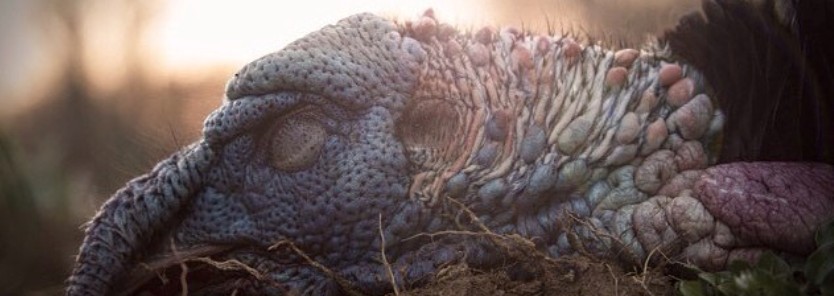Most wildlife species require the “F+W+C+S Formula” (Food, Water, Cover, and Sanctuary) functioning in an area for them to take up residence. For wild turkeys it’s a little more involved than that. Turkeys need each element listed, but they are a bit more persnickety, everything needs to be just right for turkeys to take up residence in your hunting area. There are also a couple things you MUST NOT have for turkeys to be found consistently in the vicinity. Let’s take a look at what our feathered friends need and don’t need.
1. Food
Wild turkeys need a wide array of food types at different times of the year. These foods would also vary region to region and thus subspecies to subspecies. An eastern gobbler in Mississippi is going to have a different diet than a Merriam’s in South Dakota. While some would think that planting a corn field would take care of a majority of their food needs, they aren’t even close.
Crops like clover, corn, rye, fescue, oats, millet, sorghum and chufa are great places to begin, but turkeys will also require “bugging habitat” and native foods like mast (acorns, beechnuts, hickory nuts and soft mast like wild cherry, grapes and berries), buds from deciduous trees and shrubs, along with other natural foods.
While most times you shouldn’t need to supply special bugging habitat…I would. Most of the time, mowed open areas or your whitetail food plots create excellent bugging habitat, but insects can make up over 80% of a poult’s diet! My suggestion would be to provide some wildflowers and an assortment of other pollinators. Besides attracting invertebrates, many of these species will also produce seeds relished by turkeys and other birds.
2. Water
Duh, got to have it! Let’s add “reliable” to that. They must have a consistent, reliable water source. The dew in the bottom of a boot print or a creek that dies up during a drought doesn’t cut it for turkeys. In fact, they prefer to roost near water. Just like you, they need it every day.
3. Cover
Here’s where their habitat requirements become a bit more sophisticated than that of whitetails’. Turkeys require roost trees, nesting habitat, open areas and escape cover. Most often they will reside in timbered areas during the winter and utilize food plots, agricultural fields, meadows and other clearings during the summer – where they can find food, but also escape quickly to cover.
Mature timber of some kind is required for roosting. Tree height and structure is more important than species; however, oaks, pine, maple and cottonwood are some of their favorites.
Warm-season grasses, sometimes called “bunch grasses,” grow in thick clusters instead of spreading out to form a layer of sod. This type of growth allows for space between the bunches, so your flock has nesting, foraging and escape cover all in one.
4. Grit
A grit source is possibly the most overlooked habitat feature for attracting turkeys to a property. Managers are often missing grit but don’t realize it. An old stream bed, a gravel county road or a wash-out on a ridge side can all be great grit supplies for your birds. They need these small pebbles to grind down food so that it is more easily digested. If you don’t have this habitat feature, simply bringing in a load of gravel and putting it out in several locations should suffice.
5. Santuary
Sanctuary, security, safety, space, whatever you want to call it…leave them alone!
Obviously we want to hunt turkeys, so we need to encroach into their territory sometimes, but protecting roost areas and nesting grounds is especially important. They won’t tolerate much before they change something to avoid the disturbance and oftentimes moving to your neighbor’s property is all it takes – so give them some space.
Regrettably this safety thing isn’t directed just at you and other humans. This means your dog, neighbors on a horseback ride, and PREDATORS! You must keep your property relatively free of coyotes, bobcats and fox, but also nest predators like skunks, raccoons and opossums. It’s all but impossible to remove all predators, but it’s especially important for recruitment to concentrate your efforts just before nesting.
You must look at what a turkey needs and on the other hand, things a turkey doesn’t like. The solution may be easier than you think. Just like all wild critters, they need food, water and cover – and what they don’t like is “pressure!”
More information can be found at the NWTF.






